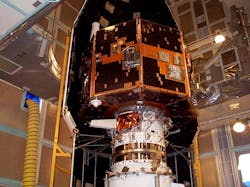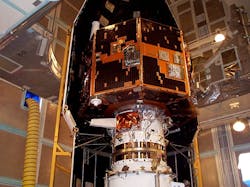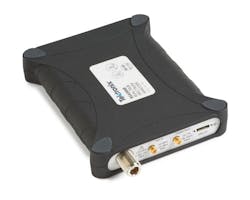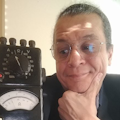Download this article in .PDF format.
Software-Defined Radio is an example of how software-driven virtualization to replace hardware-oriented functionality can enhance system performance.
The migration of hardware functionality into software solutions is occurring across the industry, on many fronts. This migration has been going on for quite some time, but has been usually confined to vertical application spaces and specialty products and solutions. However, the recent advances in both software and the hardware to run it on has given software-driven functionality a big boost in cost-effectiveness and capability (Figure 1).
Even power, long considered an analog-oriented and hardware-based application space, is being transformed by software virtualization. System consolidation by replacing subsystems with software can optimize resource utilization while improving overall system flexibility and responsiveness. Such a solution enables power in a system to be reallocated on-demand to wherever needed to react quickly and effectively to sudden shifts and surges in power usage patterns. Even AI and machine learning is now being used to predict and respond to changes in power capacity and demand.
In the case of Software-defined radio (SDR), components that used to be implemented in hardware, like mixers, filters, amplifiers, modulators/demodulators, and such are instead implemented in software in an embedded system. The rapidly evolving capabilities of digital electronics enable many processes in software which were at one point only theoretically possible. This comes at the perfect time to address our rapidly-growing RF management issues in the Cloud.
A Multimodal World[Text Wrapping Break]The Cloud and Internet of Things (IoT) have created a multi-modal and -nodal world, with the associated massively-burgeoning RF infrastructure. Once upon a time it was once believed that the IoT would migrate to a common protocol and bandwidth, but the reality today is that there is and will always be a plethora of solutions, and for good reason.
The massive numbers of devices and the huge amount of data and communications traffic they generate have forced the industry to address power, latency, and bandwidth issues (which are also all related to cost). Edge computing is one of the solutions that has evolved to do this, by migrating the logic out, to the point of application, to allow the device itself to perform tasks that were previously done by a central server. There has also been an emergence of a group of IoT-oriented RF protocols, from LoRaWAN to Bluetooth Low Energy.
Using a variety of RF solutions to address latency, bandwidth, and cost issues is a smart solution (no pun intended). Having the ability to switch from a low-bandwidth, long range, low-speed portion of the spectrum to a high-bandwidth, high-speed, short-range protocol is very useful. For example, the latest iteration of the WiFi protocol allows devices to use LoRaWAN for normal telemetry, with the ability to switch to WiFi-6 for big data transfers like software updates.
Using traditional analog RF technology to accomplish this would require multiple costly radio modules, or some kind of auto-tuning system to enable changing from one RF solution to the next on the fly. A digital system using SDR can perform all the radio gymnastics needed to use any RF solution it has an antenna able to access. An SDR-based design will also save significantly more power, footprint, and parts count over legacy RF designs.
Flexibility in test[Text Wrapping Break]In addition to addressing the plethora of RF opportunities available to IoT devices and systems, SDR can also perform as a powerful and flexible (and cost-effective) test methodology. To get a handle on some of the ways engineers are using SDR in RF testing and monitoring applications, we reached out to Kenneth Wyatt (https://www.amazon.com/Kenneth-Wyatt/e/B00SNQ1LJ2), of Wyatt Technical Services (Figure 2).
Kenneth Wyatt: That's right. My involvement up to now has been more in the realm of radio and shortwave reception. Some people are using these very affordable USB-based SDR modules for surveillance, for example. There are also companies like Tektronix (www.tek.com) and Signal Hound (https://signalhound.com/), who are basically using SDR technology for spectrum analyzers. For the most part, these are USB-connected instruments that rely on a laptop for the display and all the number crunching.
EE: I think it's a good idea that you brought up USB-driven devices. Because there are going to be a lot of people, even those going to be eventually working at higher levels with it, who are going to play around with USB devices to get a handle on the tech.
Kenneth Wyatt: Right. There's probably a dozen different companies making very affordable SDR-based receivers and even transceivers, like Airspy (www.airspy.com), who makes a number of SDR modules. Some of these can tune up to a 1.8 GHz, and so there's a hobbyist aspect where they're monitoring military communications and other two-way radio government communications even.
For me, I'm more interested in the electromagnetic compatibility uses of these modules. So there's definitely a hobbyist aspect, just those who are interested in shortwave listening or other two-way radio communications, or even digital television and aircraft tracking. There's a number of different applications. A good friend of mine uses these for radio astronomy purposes, using SDR to track solar emissions, hydrogen lines, and all that stuff using an SDR-based receiver and special microwave antennas on his roof.
He was even able to locate a "lost" satellite of NASA's. He was able to pick up the downlink signal from it. Apparently, it had been lost for a decade or so. NASA had lost track of it. He found it and contacted NASA, and it was quite an interesting news story a year and a half ago. According to The Independent (https://www.independent.co.uk/news/science/nasa-sateillite-lost-discovered-12-years-later-amateur-astronomer-scott-tilley-image-canada-a8188926.html), Scott Tilley was scanning the skies in search of a secret US government spy satellite launched by Elon Musk’s SpaceX, when he found signals from the long-lost satellite called the Imager for Magnetopause-to-Aurora Global Exploration (Figure 3).
Kenneth Wyatt: Yes, definitely. I've got probably a half a dozen of these little SDR-based receivers designed for various purposes. Mainly for shortwave listening. I spent most of my career with Hewlett Packard and Agilent Technologies in the field of EMC engineering, and now, in the last 10 years, I've been consulting in that same field. Whenever I can get my hands on a low cost, affordable tool for analyzing EMC issues for my clients, I'll do it. A lot of my clients don't have big budgets for expensive test equipment, so they appreciate the lower-cost alternatives.
EE: Well, and that's one of the things that I really appreciate talking to you about because it's opened my eyes to the test and measurement aspects of software-defined radio. List some of the ways software-defined radio, you had mentioned spectrum analysis and such, but just rattle off, off the top of your head, the various ways you can use the software-defined radio in RF test. Kenneth Wyatt: Oh, sure. Okay. As far as SDR usage in spectrum analysis, there's a couple of interesting ways of using them. The first is, obviously, characterizing the spectrum of a product because that's really what the big challenge is for most electronic manufacturers is. They've got to keep the emissions down below certain levels in order to ensure their product complies.
Troubleshooting is a big aspect of spectrum analysis. The SDR, especially these affordable modules, gives manufacturers a low-cost way to assess, or at least identify red flags in their products. You can attach near-field probes to these modules and a program on your circuit board or cabling, to see where there might be quite a lot of emission coupling from the board to the cable, for example.
EE: The beautiful part about what you're telling me is that it could apply to any software-defined radio solution at, frankly, any level, for any manufacturing situation. Because what you just described is a scalable situation.[Text Wrapping Break]Kenneth Wyatt: In fact, companies like Tektronix have their RSA306B, which is USB-connected module (https://www.tek.com/spectrum-analyzer/rsa306) that requires a high-performance laptop to be useful, but you can take this product, this analyzer, and use it for both troubleshooting and pre-compliance testing. Tektronix has some software that will do a compliance test or a pre-compliance test in a matter of seconds, and show you where you're compliant and where you're not compliant based on programmable limits, dependent on what standard you're testing to. This has been very useful for me, as an EMC consultant, helping my clients (Figure 4).
These portable spectrum analyzers based on SDR technology can be used now for locating sources of these interfering signals. You put a directional antenna on these spectrum analyzers, and you can help triangulate where the noise sources are and so forth.
About the Author
Alix Paultre
Editor-at-Large, Electronic Design
An Army veteran, Alix Paultre was a signals intelligence soldier on the East/West German border in the early ‘80s, and eventually wound up helping launch and run a publication on consumer electronics for the US military stationed in Europe. Alix first began in this industry in 1998 at Electronic Products magazine, and since then has worked for a variety of publications in the embedded electronic engineering space. Alix currently lives in Wiesbaden, Germany.
Also check out his YouTube watch-collecting channel, Talking Timepieces.





